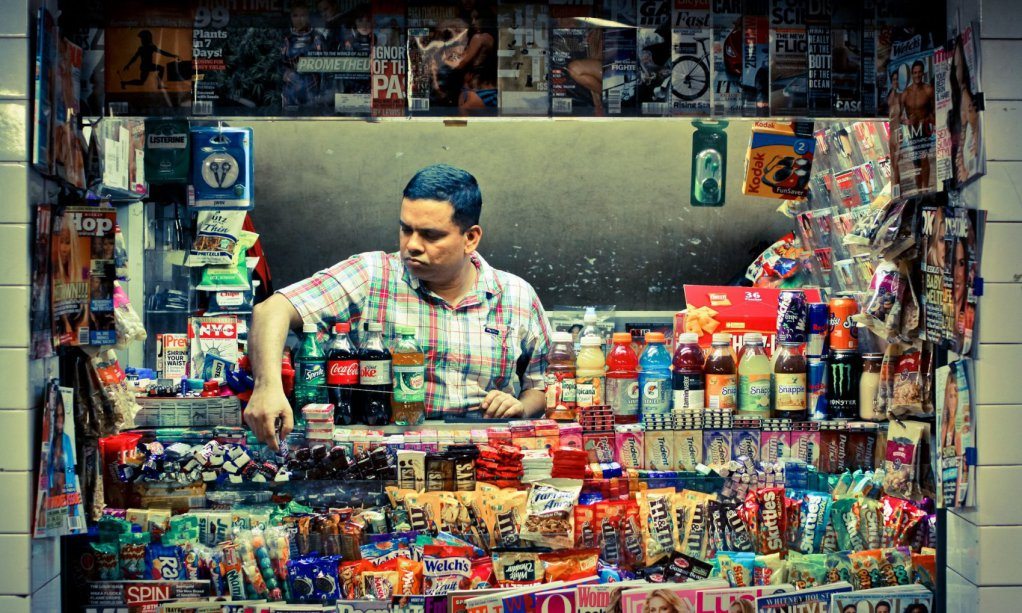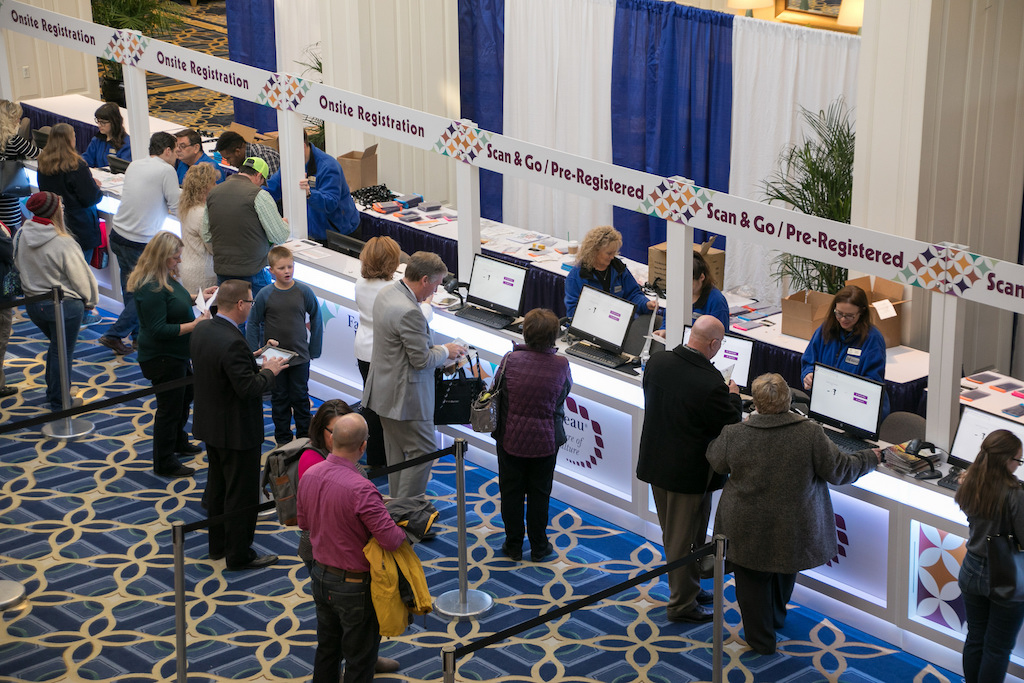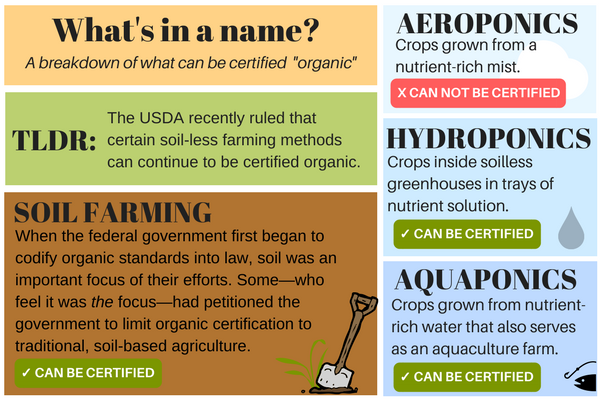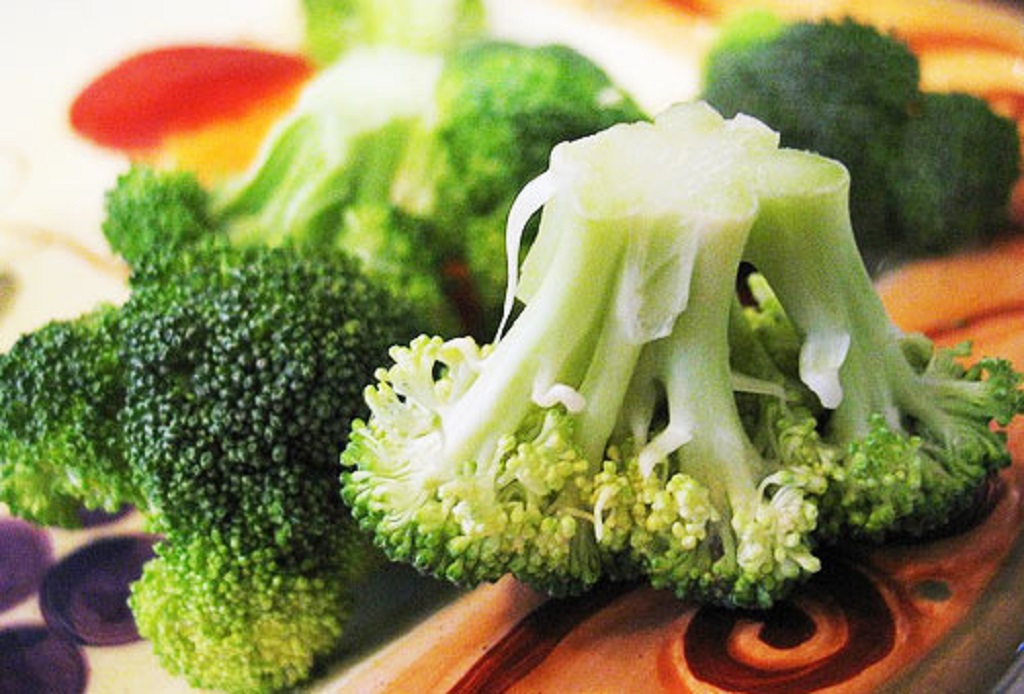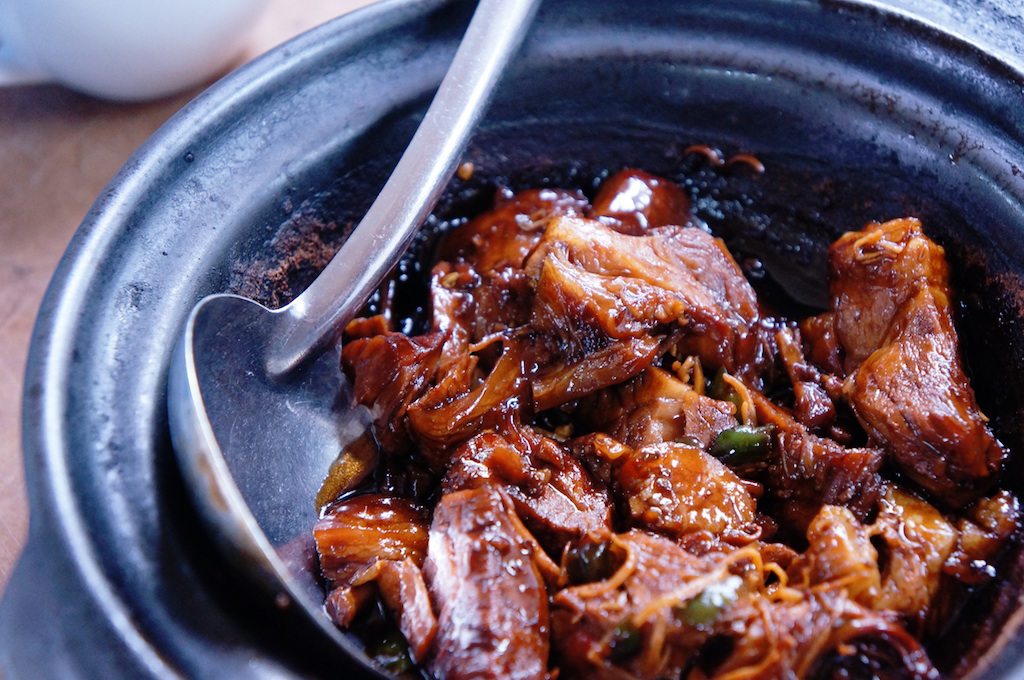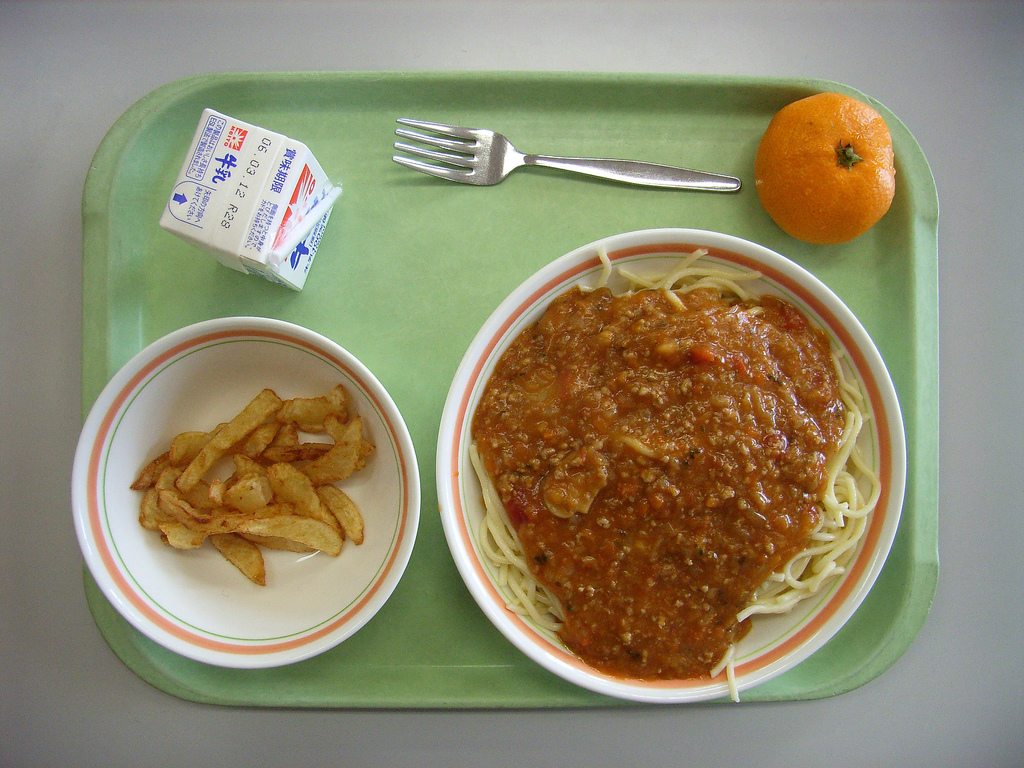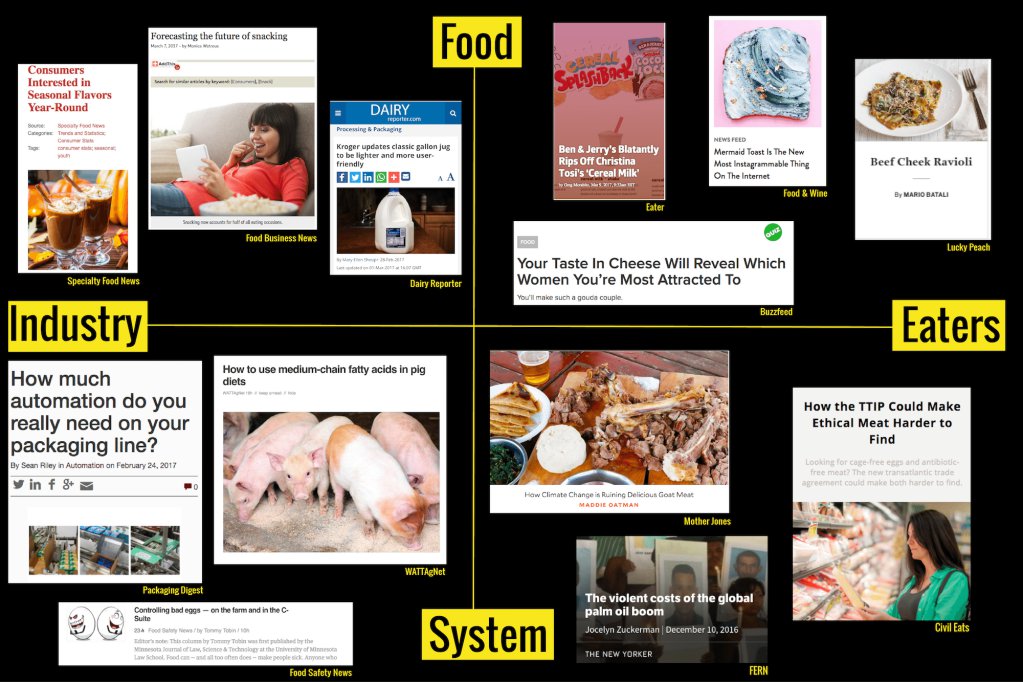
Joe
2016 was an unusually good year for food journalism: the Associated Press won a Pulitzer for its coverage of slavery in the shrimp supply chain, and the Tampa Bay Times went viral with its report on widespread false local claims in the city’s restaurants. But the thesis we’re going to start with is this: for decades, there have been two very different kinds of food media, both of which we think miss the point.
On one side, we have food porn: the gustatory, hedonistic, lifestyle and dietary kind of food reporting. (Food is a delightful thing to eat and ponder and photograph, to cover in terms of dieting and recipes and entertaining.) On the other side, we have industry-focused coverage that looks at food as a vehicle for making money. Think business magazines like Inc. and Entrepreneur, as well as more specific trade publications like Supermarket News and Dairy Reporter.
But eaters have changed in their demands, and those demands have changed food. The trouble is that food media itself hasn’t responded. If the food system’s going to shift, so too should the media.
This is a plea to get readers to be more intellectually curious. But on a larger scale, it’s a plea to the publishing industry to make food and food reporting think more systemically, to look beyond food as an object, and acknowledge it as a sector. That requires an investment in the kind of reportorial staff that’s necessary to report on the food system as a whole—not just from farm to plate, but from labor to economics and entrepreneurship to policy.
This transcript has been edited for clarity and length.
 New Food Economy
New Food Economy Beyond #FoodPorn: March 11, 2017
Kate Cox: Our jobs have evolved over the years. But there’s still no cultural shorthand for what we do. Would you call yourselves “food writers?”
Helena Bottemiller Evich: I don’t call myself a food writer, which is maybe weird because I write about food and agriculture. I call myself a reporter. There is a difference. I really try to focus on original information. That includes talking to a lot of people in the food industry and a lot of people on Capitol Hill who are working on food policy. It’s a weird question—I mean, it’s a good question—but I think you’re right that there isn’t really a space where it feels normal to cover food in a more substantive way; in a way where you focus on policy and politics and money and the harder issues.
Cox: Corby, you’ve been covering dining as a critic and also in the broader sense for a long time. Talk to me about the evolution of that work.
Corby Kummer: I’ve been a restaurant critic forever for various city magazines in the cities I’ve lived in. And the columns I wrote for The Atlantic and then The New Republic started off as being very inclusive of the culture of the place; what went behind all the food that was being served or that you would find in a store. But when I went to a place, I discovered I was much more interested in the people and their lives than you could try to discern and read on the plate, or as interested as I was in the actual food.
And then I became more and more interested in policy and food justice, terms that didn’t even exist when I was starting to try to make people aware of them. The Atlantic, which became more and more political, was a literary magazine with some politics, but it shifted straight to politics, and I started a section of the website that was just about food—The Atlantic Food Channel. It always straddled this balance between recipes and exciting stuff about food producers, and what I was really interested in, which was politics and policy and social justice. The Food Channel became a place for people who were really interested in both. But what got the most traffic was almost always related to actual food that people would eat and restaurants that they would go to and stuff that they could make. That was considered just too far off brand for The Atlantic and the policy coverage alone wasn’t enough to keep the Food Channel going.
Chase Purdy: At Quartz I have a broad mandate to cover, but our typical story is kind of an intersection of business and politics and a little bit of culture. I call myself a food reporter.
I’ve probably tweeted it and learned to rephrase it, because whenever I’m out and I talk to people and introduce myself and say, “I write about food,” their eyes light up and they ask, “What restaurant should I go to?” And then I have to sort of watch them die a little bit, as I say, “Well, I cover Big Food and money in food and influence.” I think what I do I think is truly interesting, but I need to find a way to rephrase to help people see that what I’m writing about about impacts their lives, whether it’s covering new food technology, or how your food’s being manipulated, or the major forces in Washington, or just the nature of food companies and how they tinker and push their agendas forward.
Kummer: I think part of the reason people are disappointed when you tell them what you write about is that everybody thinks, “I have an opinion about food and I post on Instagram and I know how to eat and I want to tell you my opinion of food.” Whereas if you tell them, “I just wrote a piece about the organic checkoff or the organic transition,” they’ll think, “Oh, I can’t do that.” And so it’s not as accessible to them. It’s not something they can do themselves.
Cox: When social media came along and civilian eaters were able to become critics, Corby, you said that meant food criticism, and perhaps even restaurant reviews, were dying.
Kummer: Well, they’re nearly dead. It’s not for lack of readers. People still want to know, “Where should I eat? What’s good value?” And the best value that restaurant criticism can give is answering the questions, “Will I like this? Can I afford it? And is it worth the money?” So that’s a very important service, but as media has changed, there’ve been fewer and fewer outlets that are able to pay the dining costs. It’s a very few metropolitan newspapers and then city magazines, because it’s absolutely integral to their business model that they cover food and restaurants. And they’re advertising its lifestyle and they are expected to be covering this. But other than that, the pool has shrunk with outlets that can pay restaurant bills, which are expensive.
Cox: I’m going to reveal how the sausage is made in our work. None of us seem to ever understand why food stories move the way they do. We have analytics people who tell us that our readers came from social media, but we’re not always sure why they engage with a particular piece of journalism. One day it’s GMO stories that surge, the next day it’s the farm bill.
What pieces have you written that seemed to spark mainstream public interest? And let’s talk about why that might be.
 New Food Economy
New Food Economy For the panel, we plotted the state of the food media landscape. The vertical axis plots what stories are about and the horizontal axis represents who they’re written for.
Bottemiller Evich: I’ll give you a very recent example: A couple of days ago, I was allowed to publish a 3,000 word piece on specialty crop research for Politico. And that just means it was about fruit and vegetable technology. It went into the history of agricultural research, which is this super unsexy, but really important, topic…
Kummer: …what’s called super interesting…
Bottemiller Evich: …but I was joking with my colleagues: “It’s so funny that they’re letting me do this. Fifteen people are going to read this. It’s so long. There’s no way this is going to fly. But it’s an interesting exercise, and the people who read it, they’ll be interested in it.” And I have been absolutely blown away by the response to this piece. I’ve gotten so many emails. A member of Congress emailed that it was in a hearing the other day, people are tweeting at me. And I think it’s because we told the story in a way that connected people to packaged salads, which is something that probably most in this room have consumed, or are aware of, or it’s part of their life. And it went into how we got packaged salads. Talking to my editors, we made that conscious decision to have a link so that people can have a tangible connection to what we’re talking about.
It’s tricky to do with some of these issues. You really have to think about how a reader can relate to this really wonky, weedy issue that’s going on in Washington that they normally are not following. But if you can tie it back to their lives, maybe that’s the way to do it.
Kummer: Two stories I can think of that I did: one started right here in Austin. Do any of you read a fantastic writer named James McWilliams, who teaches at San Marcos and is right here? He put this bug in my ear, “What about all the organic produce that Walmart sells?” We’re right in the homeland of Whole Foods, as you all know. This is Whole Foods territory.
James got a friend to agree to help me play this trick, which was I got off a plane and went to both Walmart and Whole Foods with a shopping list for a local chef who was going to prepare four dishes from one tasting menu—one set with Walmart produce, one set with Whole Foods produce. And we invited in a lot of foodies who were real experts to taste the dishes without knowing which was which and give comments. Whole Foods came out on top, but just barely. People often preferred the Walmart produce. So that’s something that astonishing. It’s counterintuitive. It really went well for The Atlantic. It had a popular slant, so that got a ton of readers and attention.
And recently I convened teams of people—you see I tend the have the same ideas all the time—to cook Blue Apron, Plated, and PeachDish, and another meal kit company. I ordered enough of the meal kits so that two different teams could prepare them to see how they did it and how they executed it, depending on how good the instructions were. And they had very, very different results. Everybody has an opinion now about meal kits. And I wound up with an opinion myself. That was for The New Republic and it got a ton of attention.
Cox: You both bring up a good point. Food stories, particularly policy stories, have to involve people. Food reporting on food as an actual object isn’t really that interesting. People have to make it and grow it and pull it out of the ground! The story we ran that did best for us was a piece about how Seamless is taking over the independent restaurant scene in New York City, and how small restaurants are staging a micro-revolt to try and get their customers—in this kind of black market, underground way—to go back to ordering directly from them.
I have a gauge, which is if any of my friends actually read a New Food Economy story and share it, that means it worked. That story went crazy for us on social, and I think it’s because, especially in New York, you encounter Seamless every single day, in some way or another. And whether or not you continue use the app, you will never forget these small restaurateurs that we covered who were really making a plea to be able to take back their capital from the giant hubs of tech. Somebody said to me, “It’s not really a story about food.” Okay. Except it absolutely is. What seems to make a story work is chronicling the drama of real people’s lives as it relates to how they sustain themselves.
Kummer: When I did a similar piece for The New Republic, people wouldn’t go on the record against Seamless. You’ve got to think they were so afraid of losing that important outlet.
Cox: That’s another good point. One of the reasons the food system is so ginormous and powerful and rich is because it really thrives on the proprietary: proprietary recipes, proprietary information. And privacy and not wanting to share secrets or talk openly for fear of either retaliation from Big Food or from your fellow restaurateurs, it’s a real issue. So you’re required to ask your sources to be bold and go on record and put their names and faces out there—especially if they’re trying to be part of changing food in any way.
Purdy: One of the reasons I really love this job is that everybody eats. And because of that, everyone has a very personal relationship with food, and it’s just inherently political or part of who you are or how you express yourself. It’s very universal in that sense. And storytelling—even though I cover food specifically, I still see myself as a storyteller—is also very universal.
Over the course of the last couple of years, I have run into all sorts of sources that lead to stories. And through that work, I connected with a group of vegans who were all scattered across different sectors. One had just started a clean food lobbying organization in Washington, D.C. One was the main policy guy at the Humane Society. A couple others were off in a different direction. One works in a major bank in New York. I found out that they all knew each other, they were all friends, and at one point had all lived together in Washington D.C. That gave me a story about how these seven vegans, who went to college together, essentially decided in a room that they were going to break apart from this whole vegan absolutist, pitchfork stance, “Don’t eat animals,” and go a different route, a more pragmatic route. And over the last several years, they’ve made real change in the food system.
Two days after the election, I rebranded that story. The theme was, “Even if you’re just seven people, how do you create change?” And it just totally went crazy for us because a lot of people were feeling a lot of feelings after the election. And a lot of people wanted to create change. And this was a story about how people created change in their world.
Cox: Let me also say that in food startup coverage, which food media is intensely crazed for, there seems to be a lot on the ventures themselves—the cookie that will change the world, or the cleanest brownie. Food coverage should be broader and more challenging than that, than just venture number 53 of the week. We all as writers exist somewhere in the landscape, pulling from these worlds, trying to avoid being susceptible to trends.
As an exercise, we asked each of our panelists to go back and be readers again, and to think of a story from the last year or so that they felt busted through the silos of food media. These are the stories they chose.

Kummer: This was old-fashioned, shoe-leather reporting, which involved calling up different chefs and farmers whose farms were listed as sources on farm-to-table menus and saying, “So, how long have you been selling to this restaurant? And are they good customers?” And in many, many, many cases the farms had long ago ceased to get orders from the restaurants, but they were being used as shills, as lures, to try to get the cred of the restaurant up. It was a much more complicated story than it seemed, but it was fantastic. And it took a year and a half, constant reporting, constant phone calling.
The Boston Globe did a piece about seafood fraud. Every piece about seafood fraud evolves from this piece. It took them a year and they sent off all sorts of fish samples to a lab in Toronto to find out that many, many “red snapper,” “grouper,” and “cod” were just broadly labeled on menus. It was so ingenious and so persistent and I hope it will win a Pulitzer. That’s a perfect story.

Amanda Kludt, editor-in-chief of Eater, spent over a year tracking down women to ask, what is the policy on the line was for how maternity leave is paid? And she had a woman who was really rising as a sous-chef and then was going to be executive chef, who took two-and-a-half months off and was told, “Well of course we have to fill in. We’ll let you be a manager. We’ll offer you an equivalent job but you’re off the line. You can’t be doing this.” And they took owner after owner and asked them, “Are you able to pay insurance?” Mostly they said, “No.”
It was the idea that it’s still such a male dominated profession. And women were seen as being weak and unreliable once they went off to raise kids.

Purdy: Grossly oversimplifying all the reporting that Olivia Zaleski from Bloomberg did for this story: the idea was that Hampton Creek, in its earlier days, was paying people to buy its products from grocery stores to create this illusion that it was so hot that it just flew off the shelves. There’s still a lot to learn about what was actually happening, but I think it was an important story because there are so many new food technology companies bursting up everywhere, let alone Silicon Valley, and these food-tech, plant-based food companies promise to lead us to a sustainable future. They’re written about like, “Perfect day. You can make cow-free milk now.” It’s like, “Yes. You have eggless mayo, so feel better about your carbon footprint.”
But these are businesses, and they should be scrutinized. Just because they have cool models and great aspirations doesn’t mean that they shouldn’t be looked at as critically as a General Mills, for instance.

Bottemiller Evich: I think the piece by Kelsey Gee at The Wall Street Journal is a really good example of breaking down the silos between the industry and production and economics of poultry, which is the most consumed protein in the U.S. And then the impact that that can have on eaters. In this case, Gee was connecting readers to the reality of fast-growth chickens, which have doubled in size in the last 50 years. We’ve really figured out how to get them big quickly. And the piece goes into the sensory impact that that growth can have.
It really poses a challenge for the industry, but anyone reading this as an eater of chicken, which includes a lot of people, is reading it for the texture, explanation, and the production techniques that explain the textures. We all have eaten an overly chewy piece of chicken breast, and the industry calls this woody breast. It’s just more fibrous, but it’s a real symptom of the way we produce chicken extremely efficiently. There’s a reason we can buy chickens for so cheap. There’s a reason that it is the most consumed protein. But this is a consequence of being that efficient. And the story talked about how the industry tackles this. Gee talked to researchers, talked to people in venture capital, and walked through how they’re trying to deal with this.
Purdy: Actually if we could just mention, about a week ago Helena and I were leafing through the latest issue of Lucky Peach—the chicken issue. And they had some stat in there about how, if a human child grew at the rate that we are growing chickens now, that within two weeks it would weigh 600 pounds.
Bottemiller Evich: I think it was 300 pounds…
Kummer: …It would be delicious.
Bottemiller Evich: And the thing about the Lucky Peach issue—and I have to admit, I’m a bad food writer, I don’t read Lucky Peach usually, so I really suck—but there’s a ton of food science and business and production history in that issue, and I think that those are the kind of things that, if you are truly interested in food, provide context and content that actually make you an educated consumer. Whether you’re a consumer or in the food industry, just understanding the system and the economics behind these things is crucial. And it did it in a really fun way, there’s tons of graphics about poultry science. I’m glad you guys are still here. Even when we talk about poultry science.
Cox: I want to end on one final question: Do we need to call food journalism, “food journalism” anymore? What would be the value of identifying it as different from really exceptional reporting? Or just journalism? Is there a need to differentiate this for readers? Is there a value in food reporting that is different from business reporting or looking at other sectors?
Bottemiller Evich: I think food should be covered as a topic just like anything else. Think about the way education is covered. If you were to go to an education page at The Washington Post, you would get policy reporting, you would get local education reporting, you would get student debt issues, you would get a holistic view. Education has always been an issue that mainstream papers cover because people can also relate to that issue. Most of us have gone through public or private education in some way. There’s so many teachers in this country. Education is a huge business.
You can say all those things about food. I always throw The Washington Post under the bus and I apologize for that—but I remember at one point I realized they had a student debt reporter at The Washington Post. But they don’t have anyone who covers USDA, which is one of the largest government departments, largely sets the agenda for our entire multi-trillion dollar food system, and no one covers that as a beat. And it’s ripe for accountability reporting.
Kummer: I just found out that Stephanie Strom, the very good business reporter from the Times, who has made food her beat, moved into the food section. In The Atlantic, the reasoning behind stopping the Food Channel was, “But we’re going to be reporting on that in all the other sections.”
Cox: The food sector is like only one other sector in the U.S. economy, which is the healthcare sector. But you can even opt out of that. You cannot opt out of the food system and stay alive. We make decisions as consumers. Policy makers make decisions on our behalf. But nobody can say, “Not into it. Just going to check out of food.” It’s not enough just to say to people, “Organic is many shaded,” for instance. We’ve got to look at it from all angles. We’ve got to talk about why.
How can this change? Tell us what you think at [email protected].

